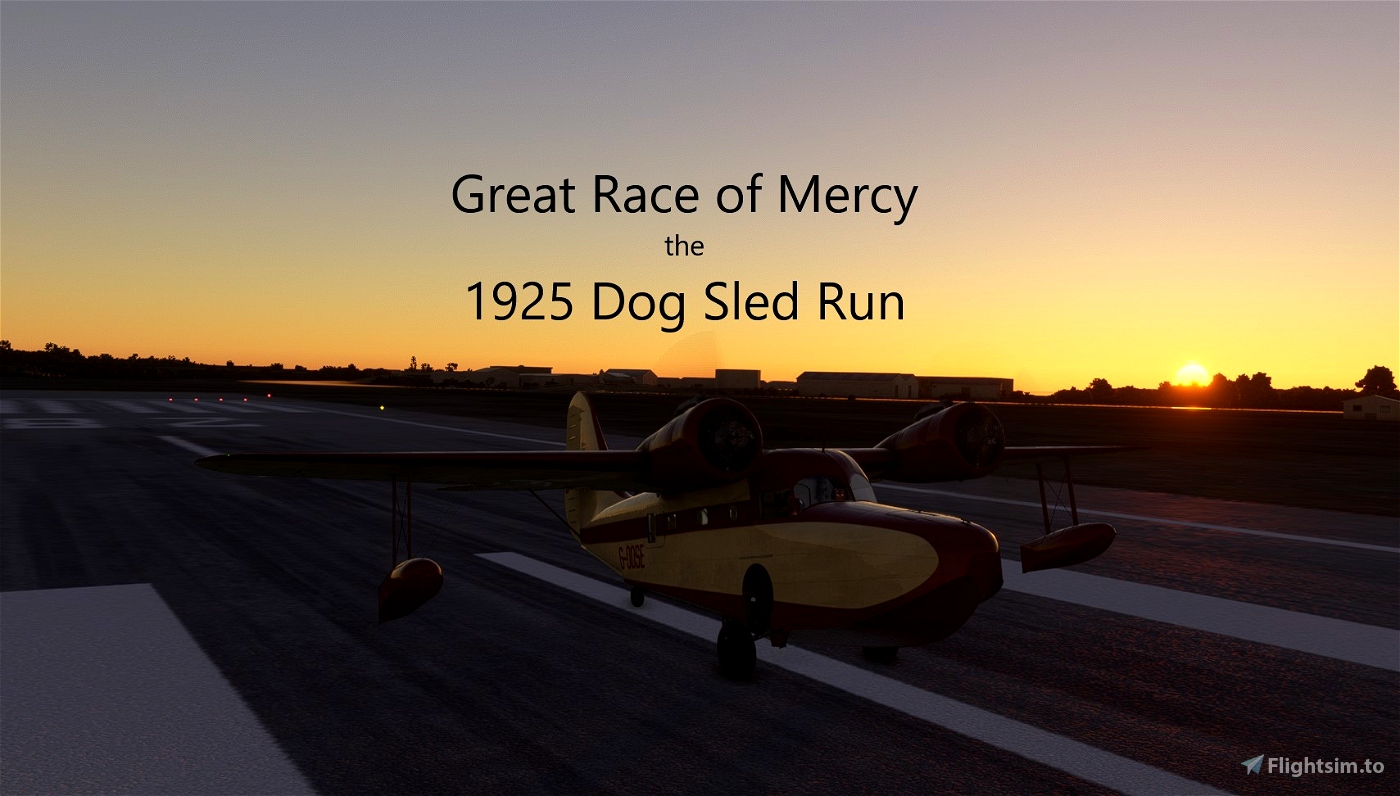This flight will take you over one of the routes for the Alaskan Iditarod Dog Sled Race. The race developed from the 1925 Mercy Relay to bring serum to Nome, AK, due to the diphtheria epidemic raging in the state at the time.
One dog sled team led by lead dog Togo, ran over 200 miles in the relay. Enjoy this flight over the rough and desolate terrain of Alaska.
The weather is set to mild winter. But, you will be flying with low-level visibility due to the low position of the sun in the sky. Your flight leaves at 11:00 AM. Most flights are about 35 minutes except for one leg that is 50 minutes in length.
There are 5 legs to this adventure and you will be flying the Grumman Goose. The plane is very easy to fly once it is airborne. But, like most geese I have seen, it has a terrible time walking a straight line on the ground. Be sure to engage the tail wheel lock while on the ground while you are taking off or landing. Disable the tail wheel lock to taxi or once up and flying. While flying, if you have the tailwheel locked, the trim will not work well and the steering will be sluggish.
The Goose flies very stable. For those of you that love autopilot, you won't need it in the Goose. Once you have the settings correct and the plane trimmed, it will almost fly itself. Your settings should be stable at 1900 - 2000 rpm, with the throttle set to 179 knots and the mixture set towards lean. Once in level flight, you can adjust altitude simply by adding or subtracting throttle (Thrust).
Hint on following the navigation vectors: When taking off from a runway the heading for the flight to follow originates from the center-line of the airport. To make the best entry to that vector you should circle around the airport to the heading indicated for the leg of the flight and then follow that compass heading. I am not a pilot and, in real life this may be frowned upon by the airport tower. But, it is easier to be on a more accurate heading if you start from the center of the airport to get your heading to the next waypoint.
While flying near a coastline, the coastline is basically the flight path. When flying over a river, the river is basically the flight path. Use this as a basic flight path whenever possible. There are several parts of the flight where the river or coastline will not be the correct heading. Just be aware of your actual heading as you fly.
Enjoy your Iditarod Alaskan Flight!
WFRayer











Thanks for this, Togo was the true hero of the Serum run, People only remember Balto because he ran the last 50 miles to the village of Nome, People forgot that Togo ran over 200 Miles. But truth be told, there were many dogs and mushers that deserve the credit as well for their contribution to get the serum from Fairbanks to Nome. The Book the Cruelest Miles goes into greater detail about what everyone went through. Again thanks for this, can't wait to try this.
1 years ago
You are welcome! I did this after watching a movie about the dog Balto. Very good movie!
1 years ago
wfrayer
artg1960